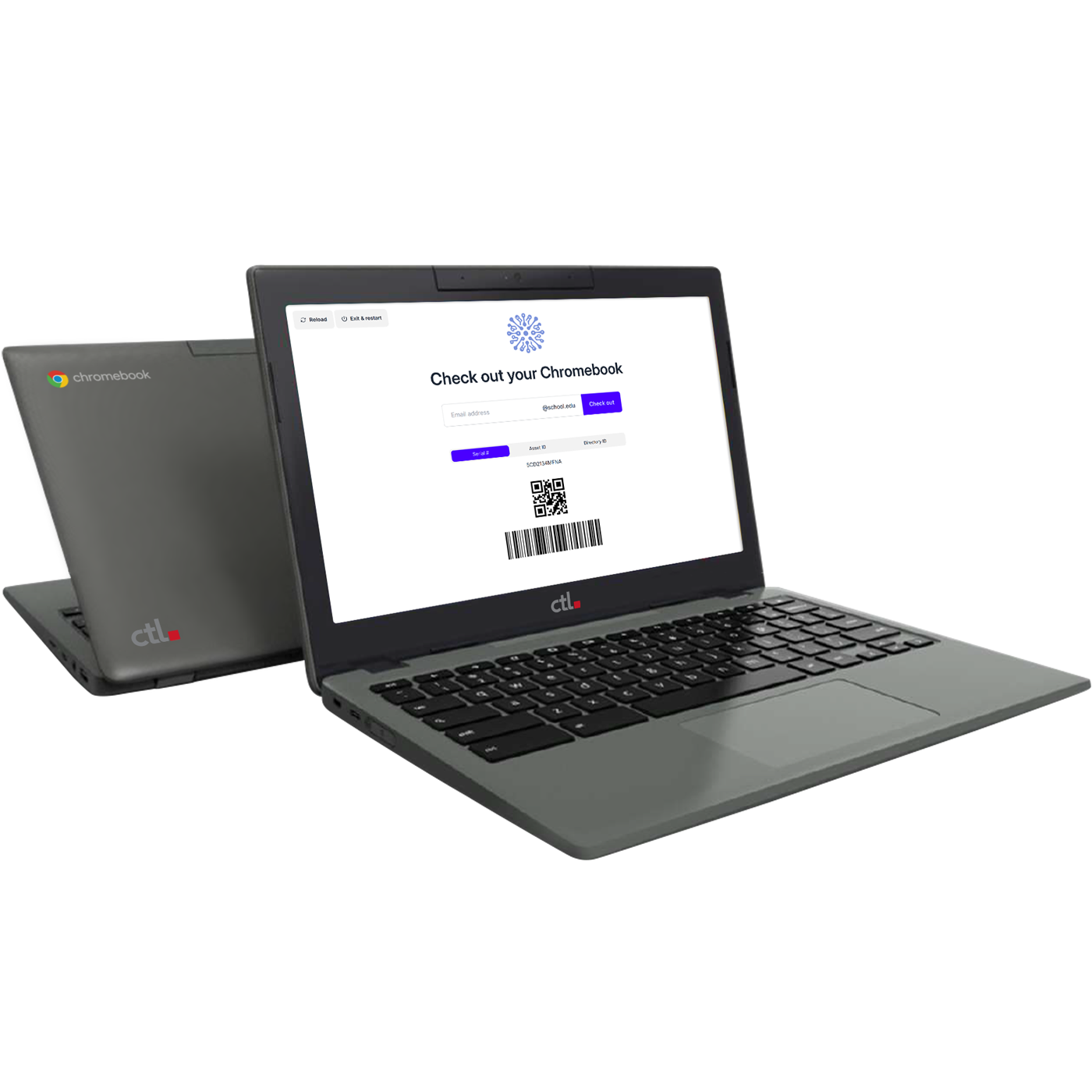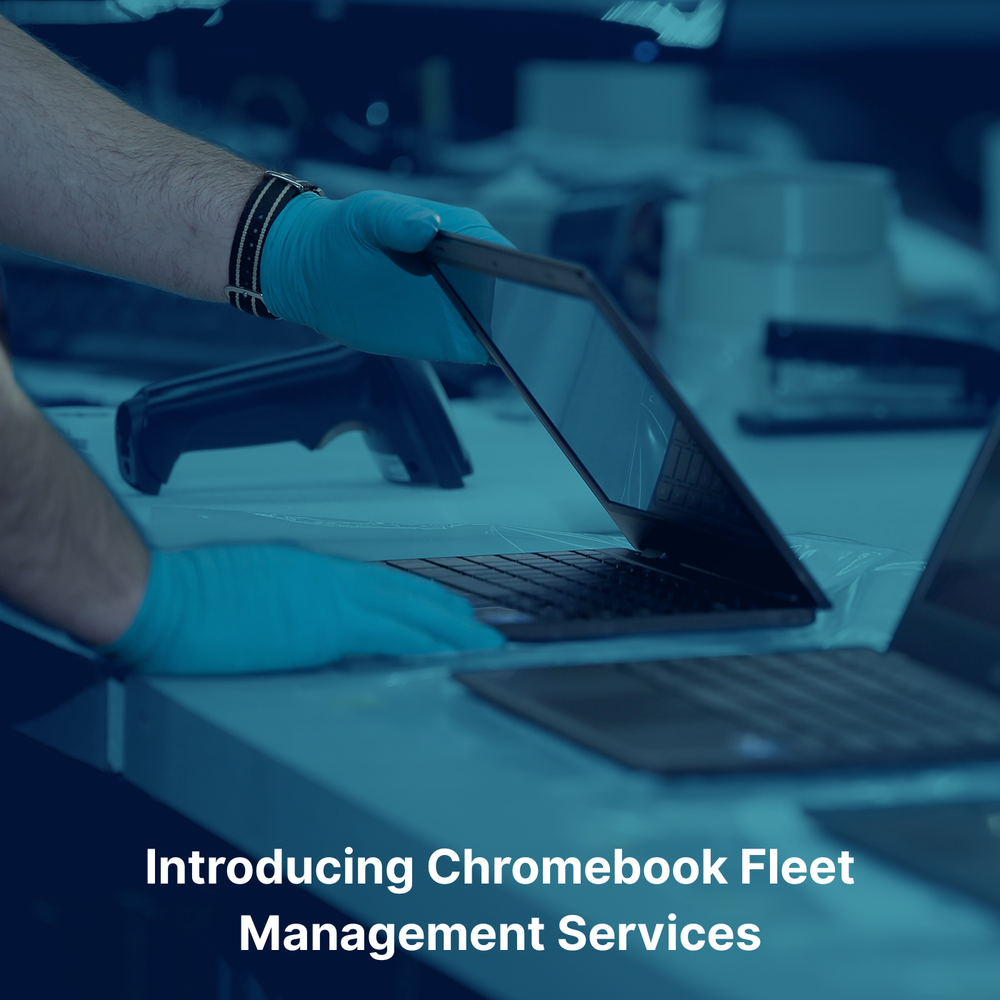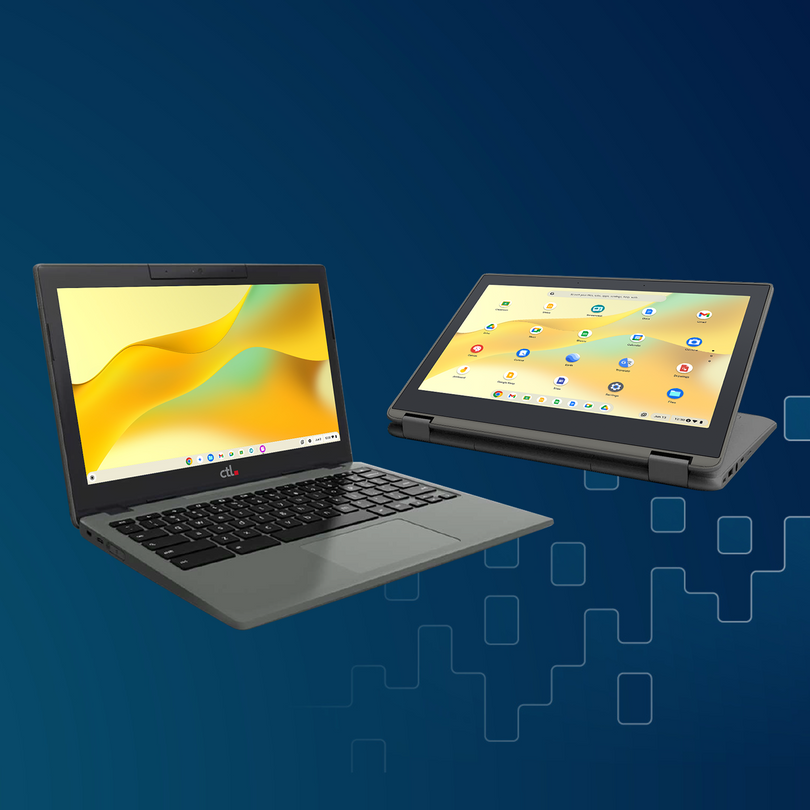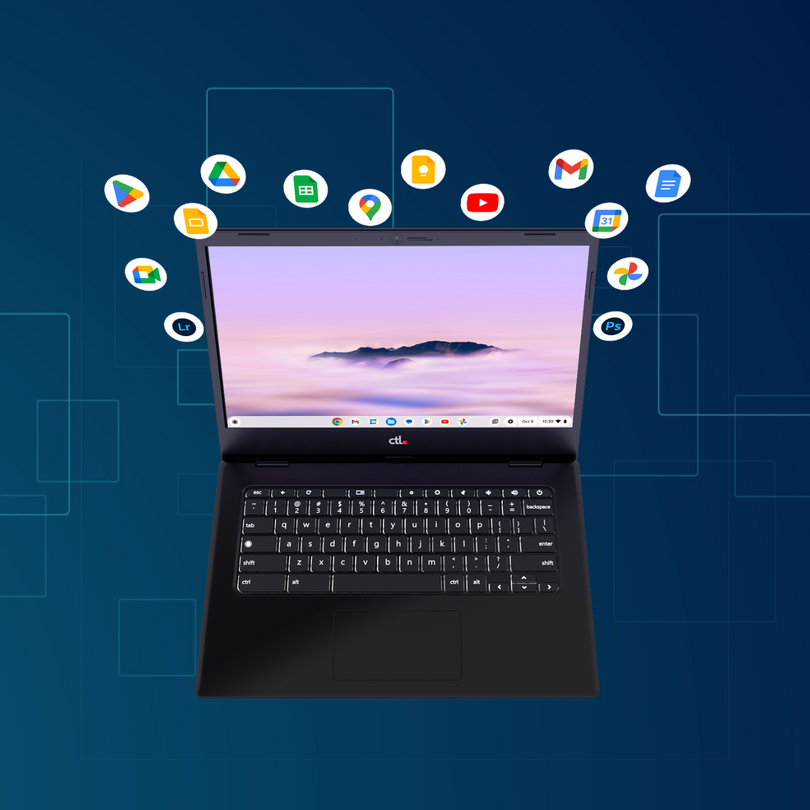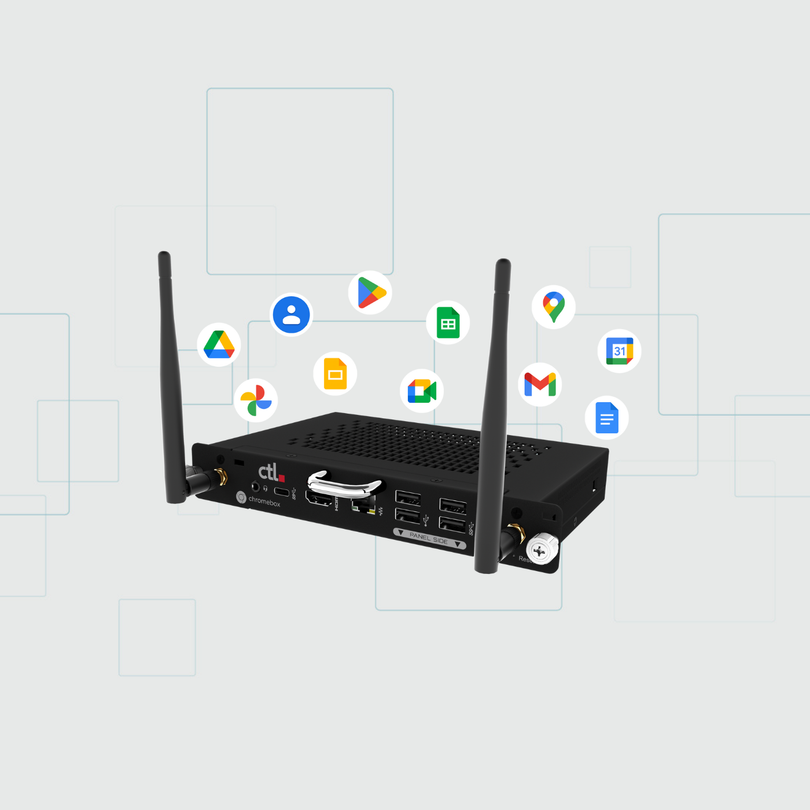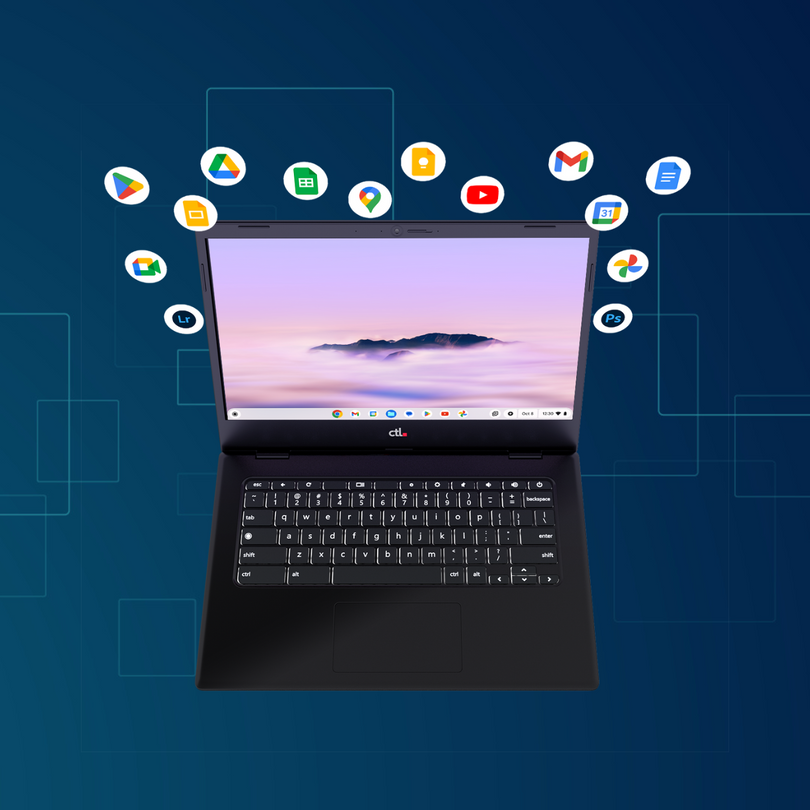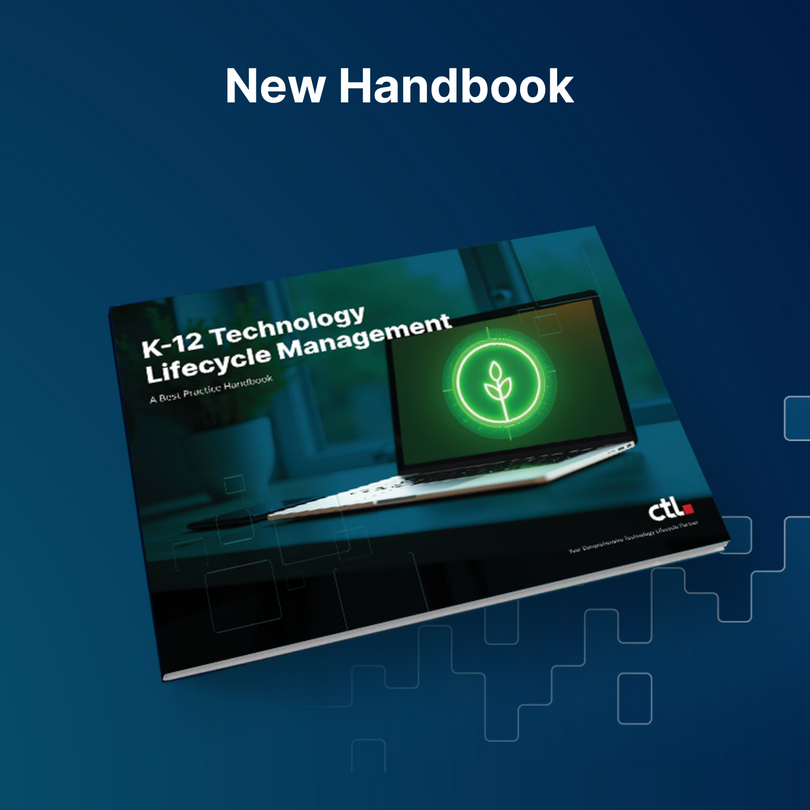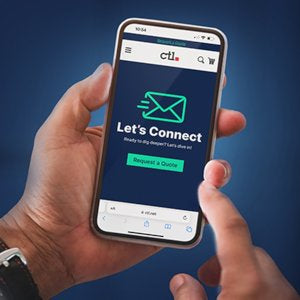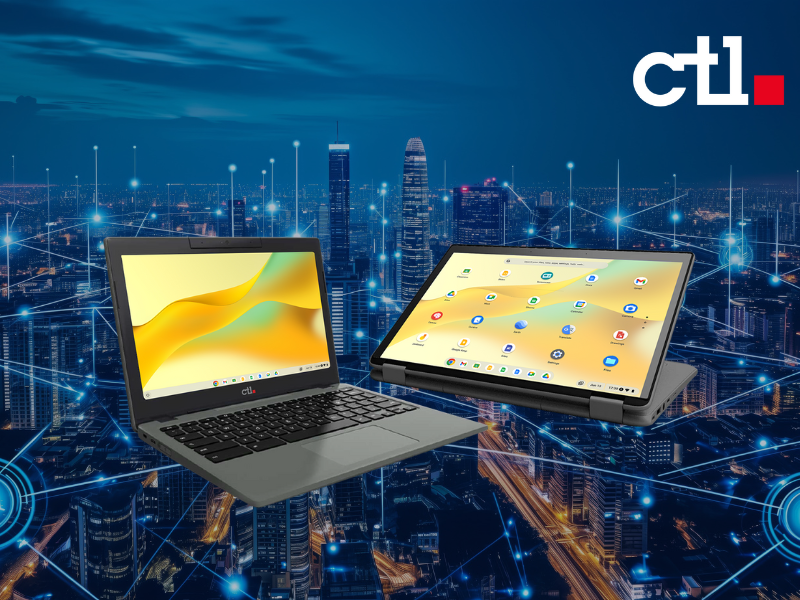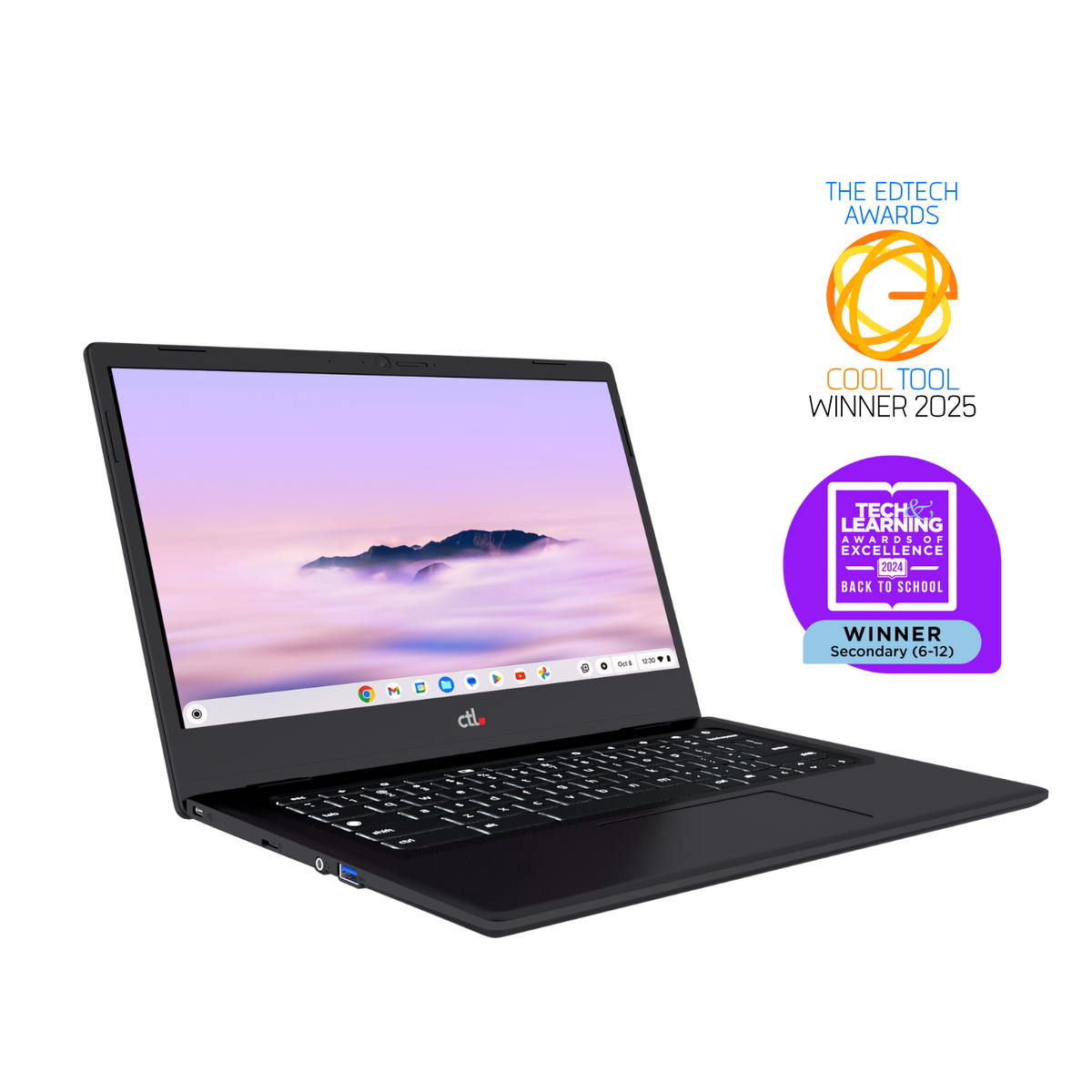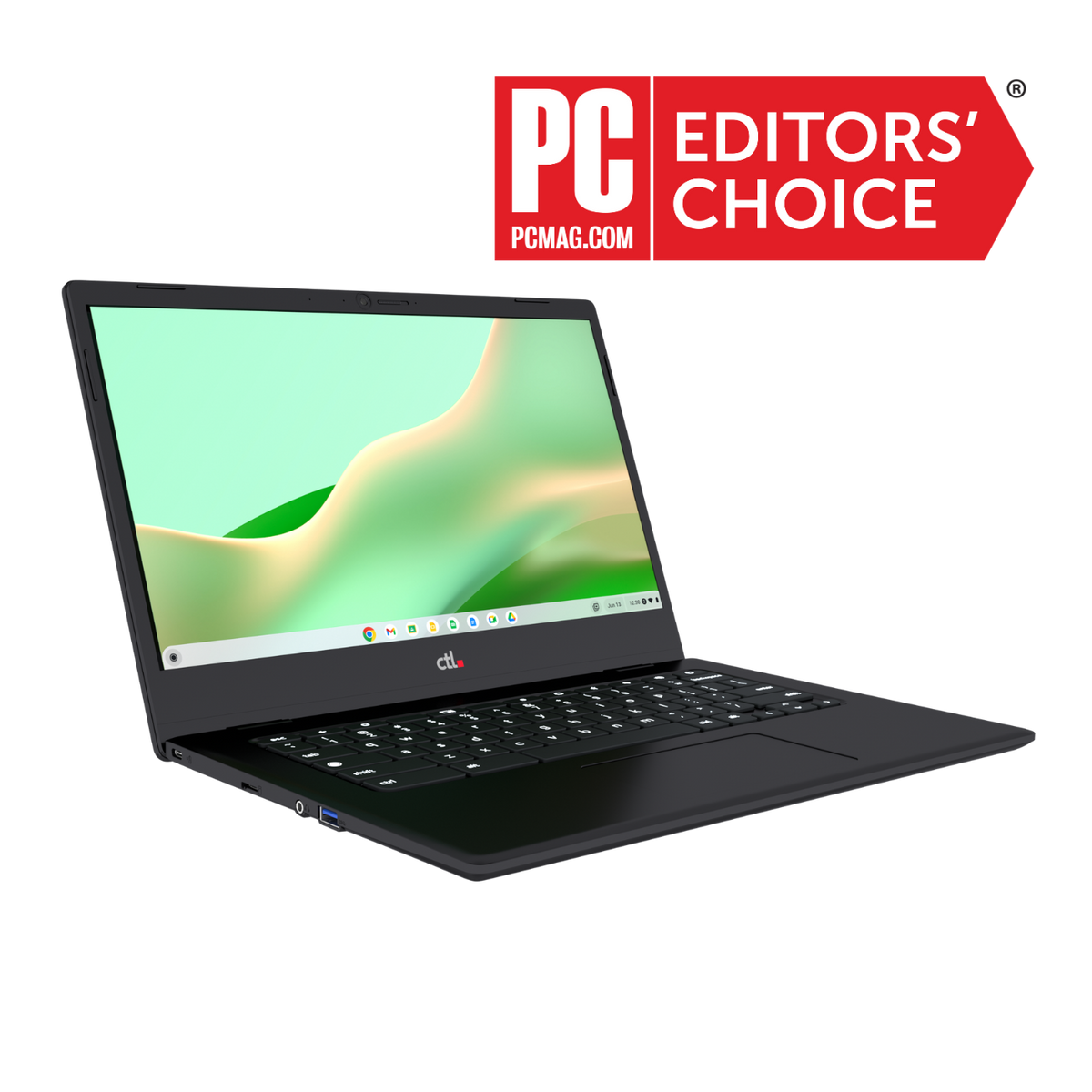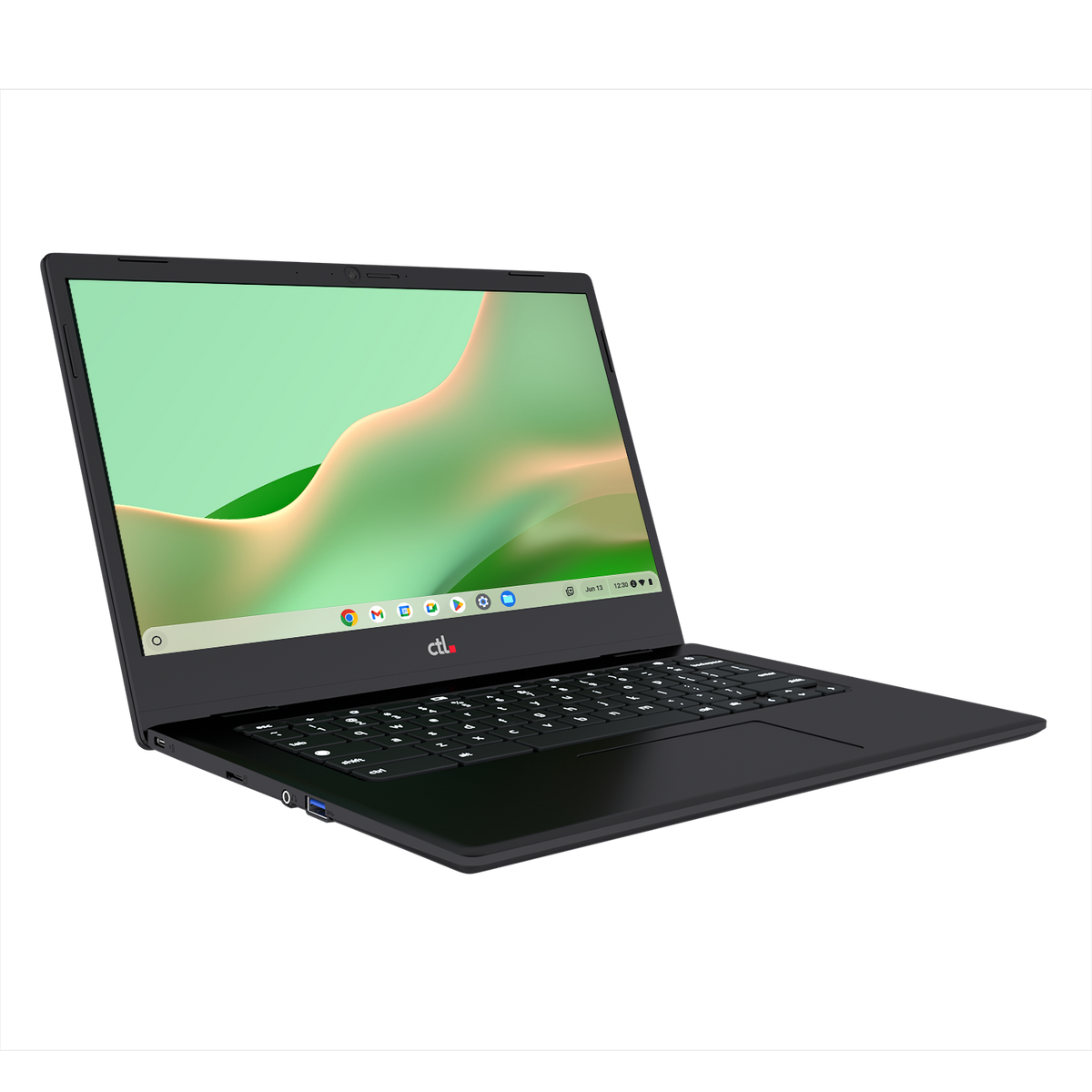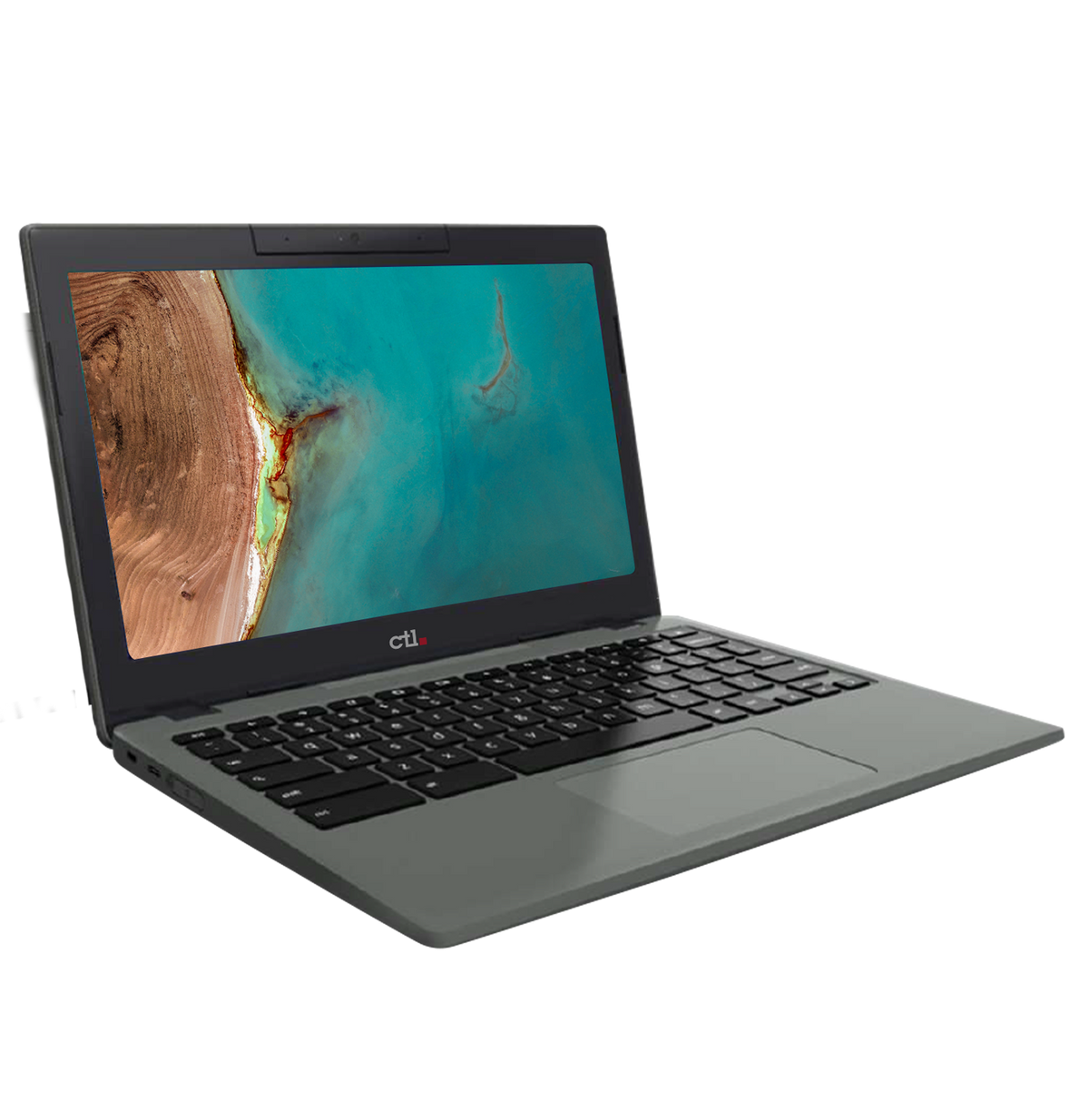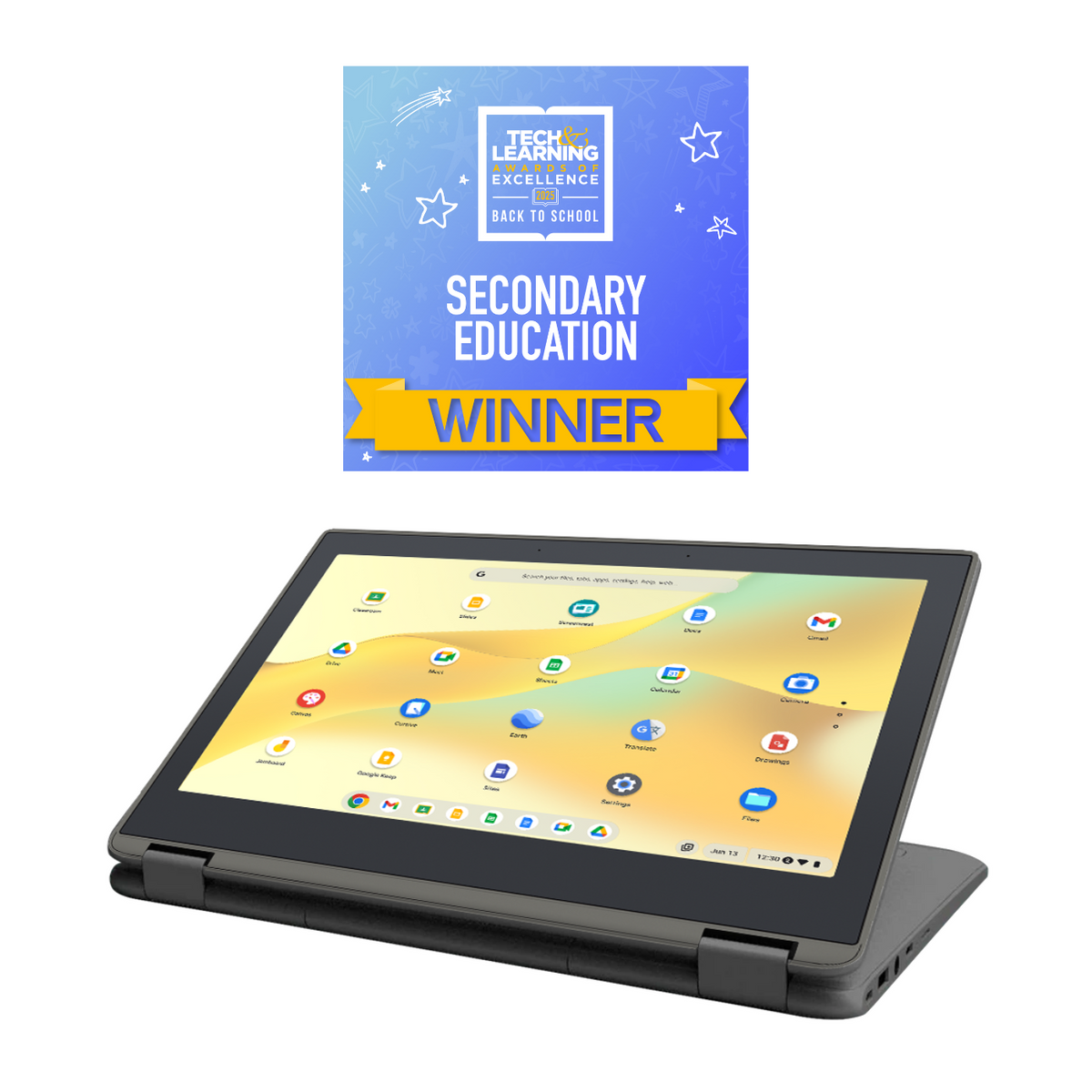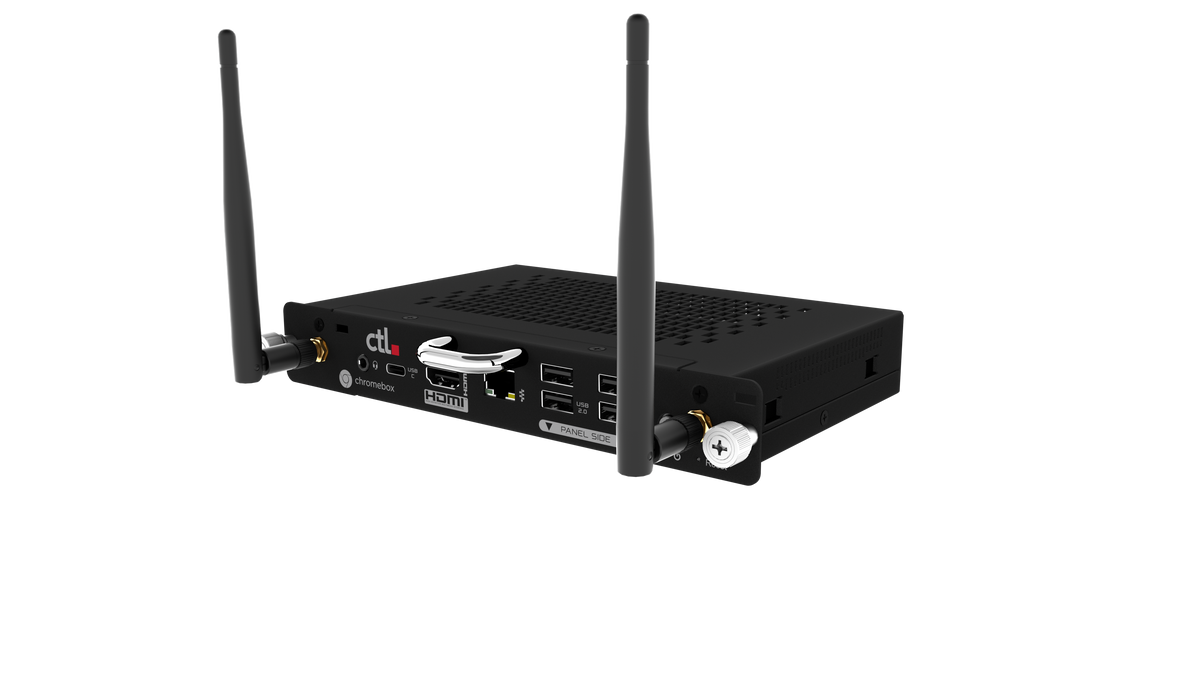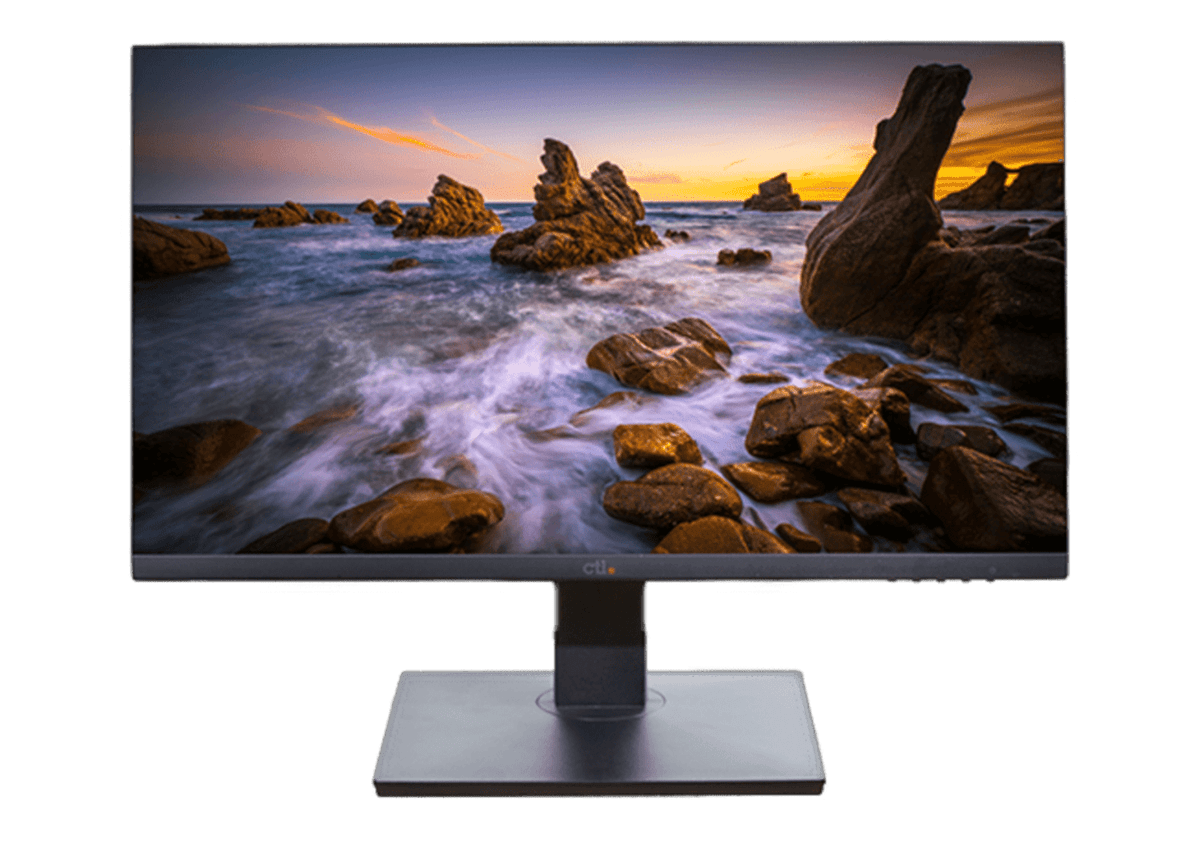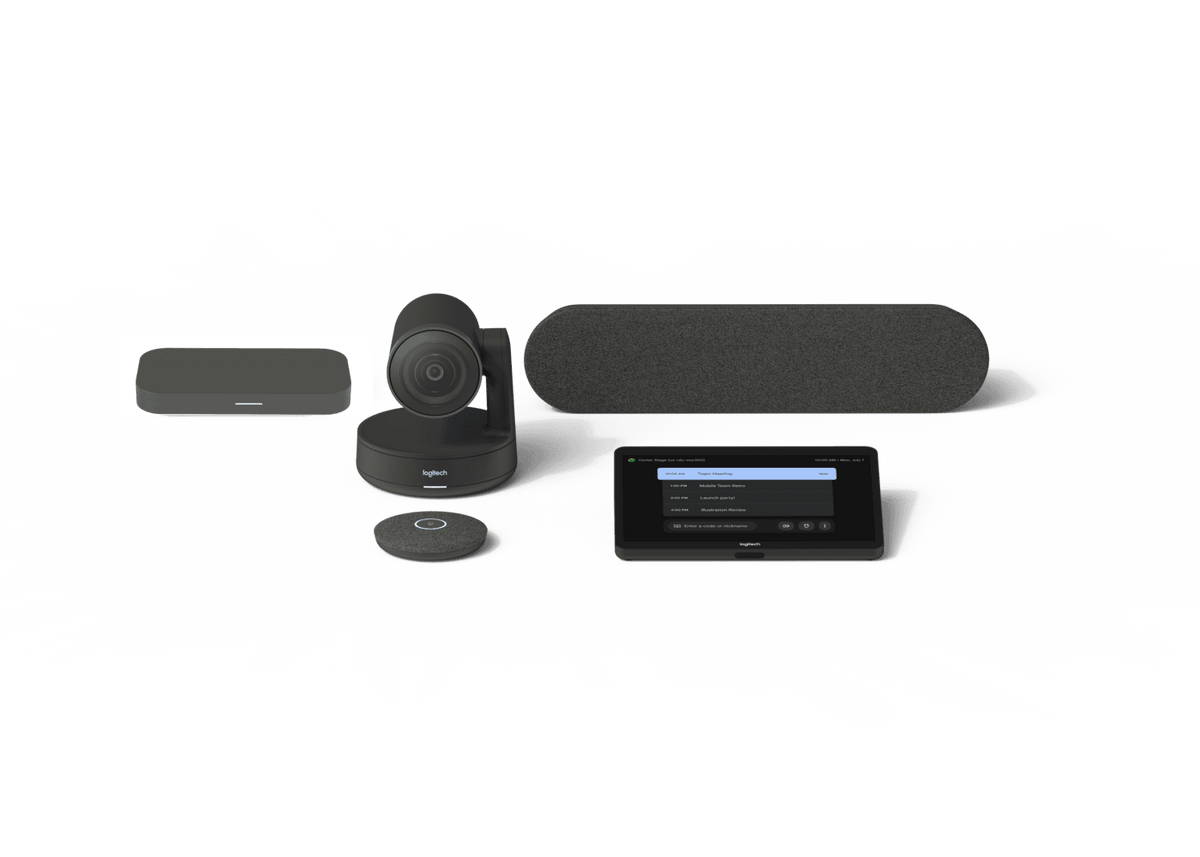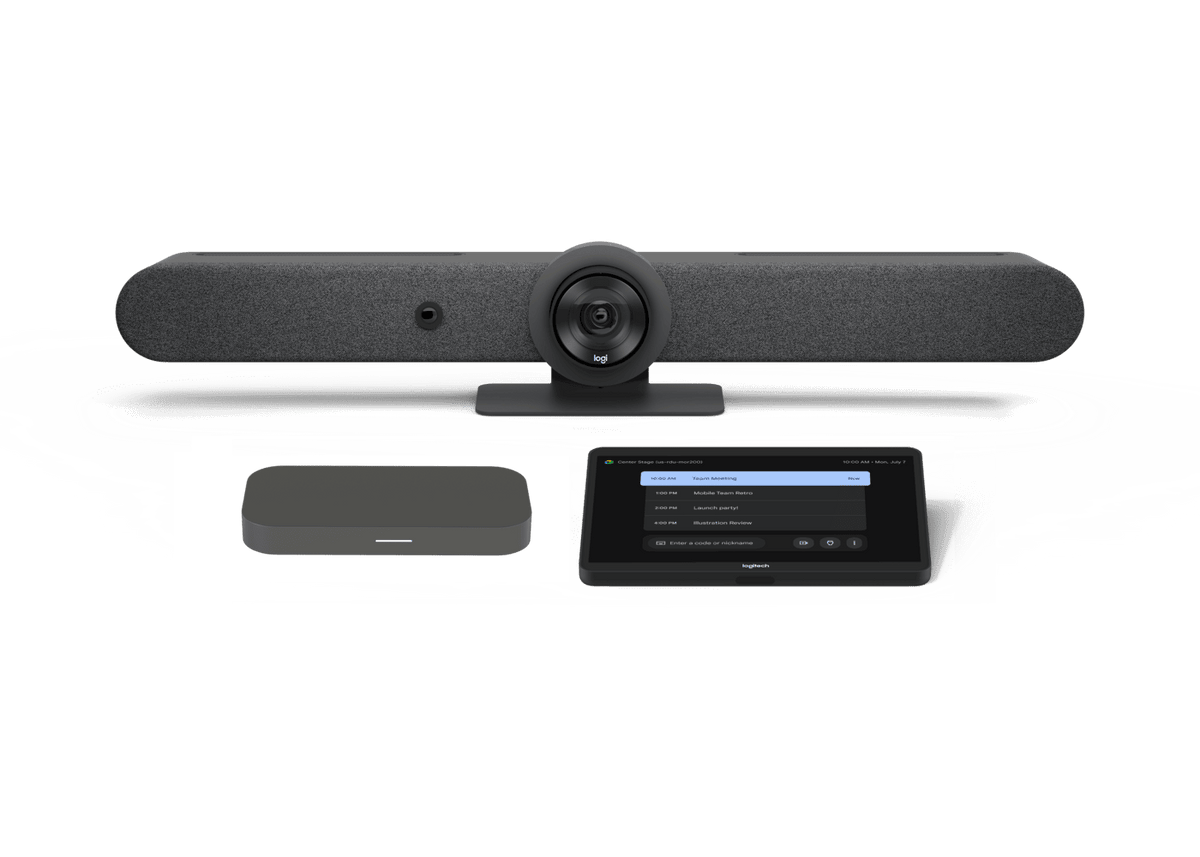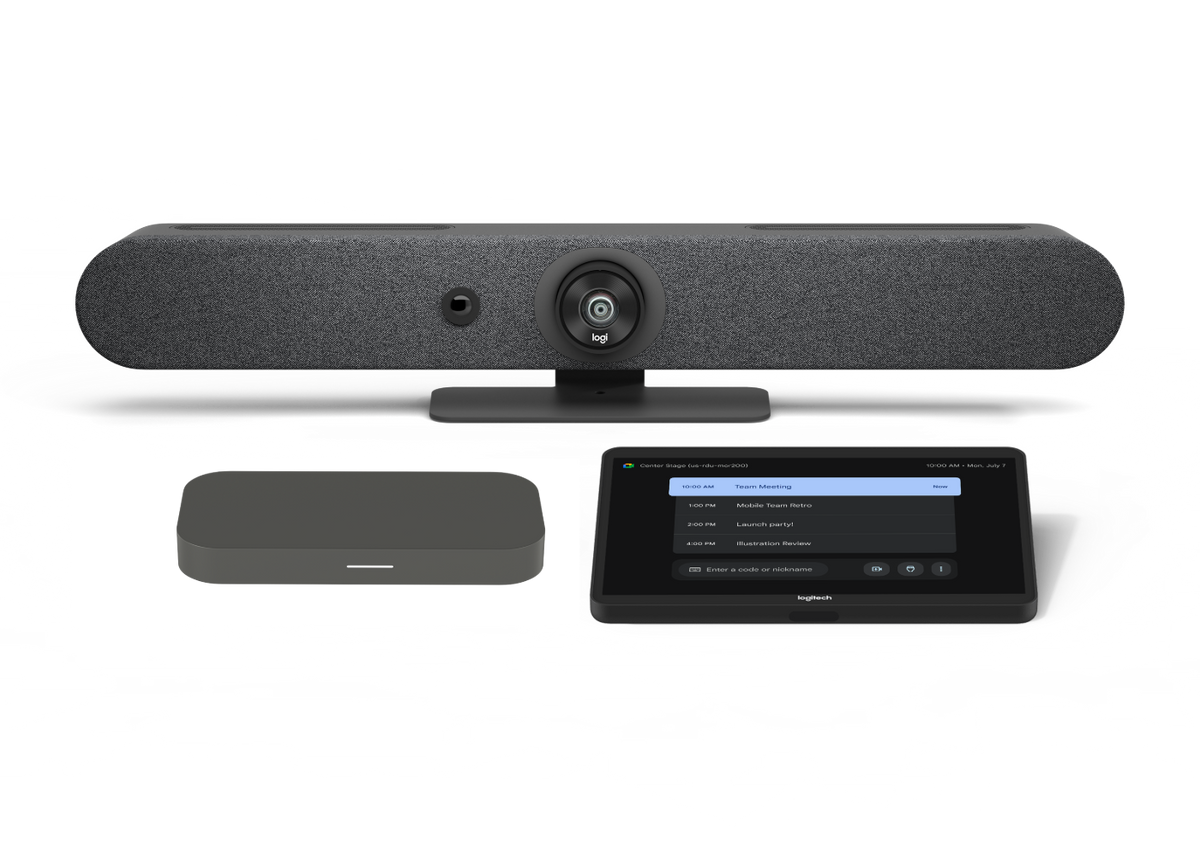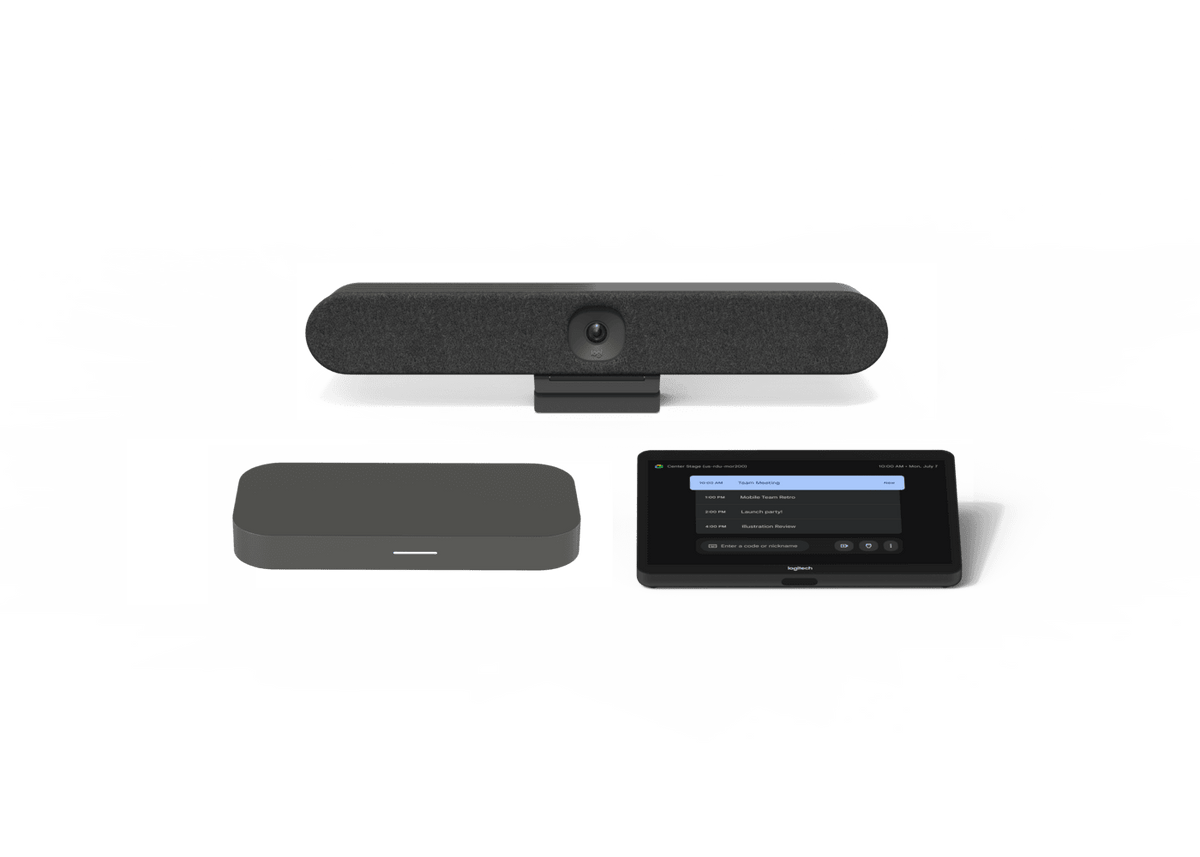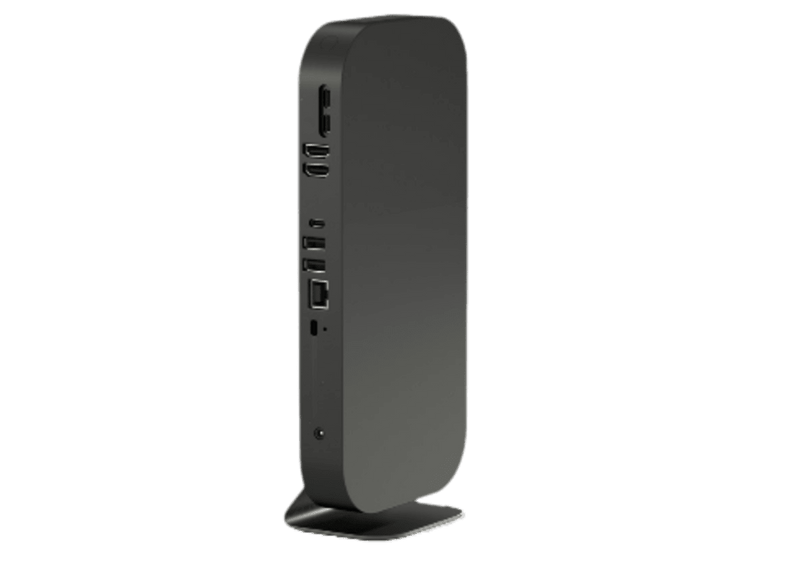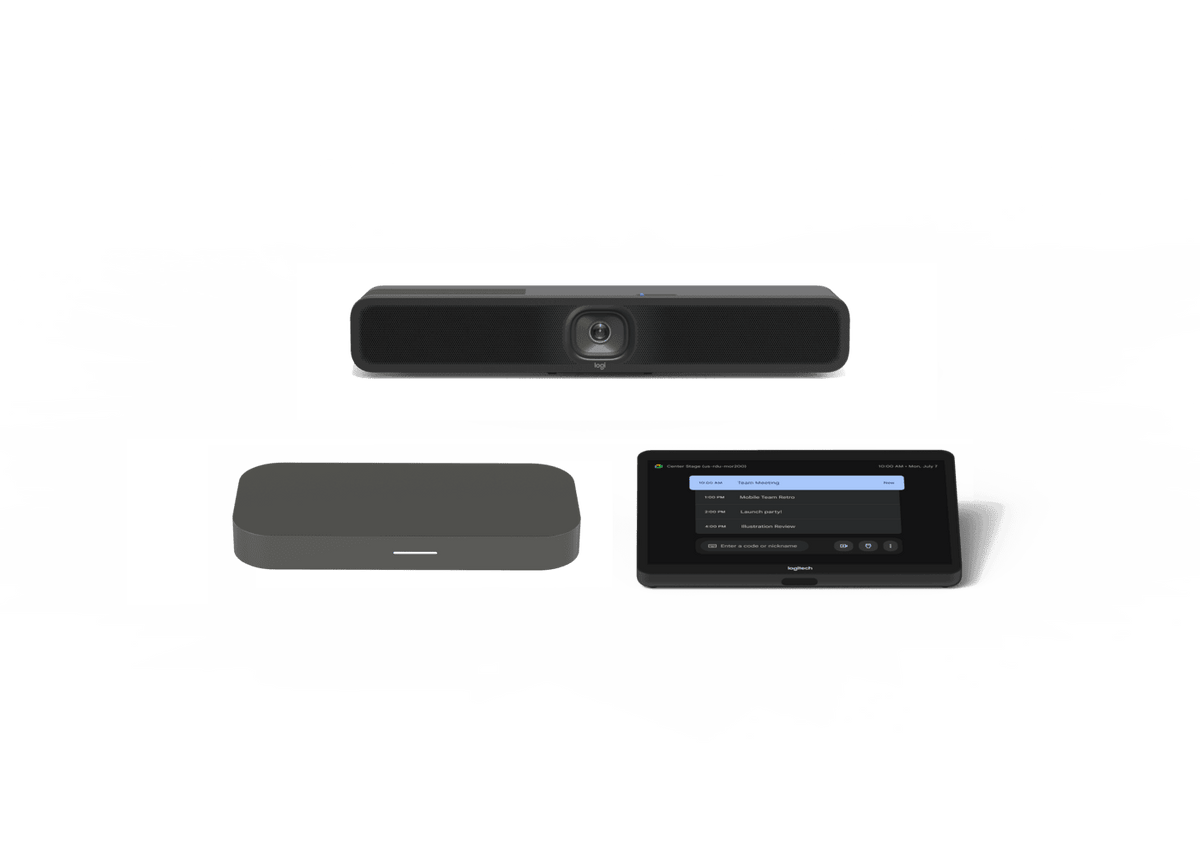At CoSN 2024, CTL partnered with Google and one of its customers to present the technology roadmap for private wireless networks for school districts in a speaking session. In this blog, we’ll break down the topics and main points for you.
CTL on 5G Chromebooks and the Three Pillars of Focus
CTL began the session with a quick introduction to its role in the industry as a service-centric OEM of Chromebooks and other ChromeOS devices. Currently, CTL Chromebooks are serving student and workforce users in more than 55 countries.
CTL also outlined its 3 pillars of focus for the EdTech market:
- Connectivity – helping schools everywhere bridge the digital learning divide with seamless connectivity.
- Sustainability – empowering sustainable learning environments through environmental programs, length of device service, buyback programs, and recycling
- ChromeOS Cloud – unlocking the potential of cloud-based education
Finally, CTL laid out its product line evolution plan to integrate 5G connectivity into its Chromebook laptops, with new 5G-enabled Chromebooks slated to begin rolling out in the second half of 2024.

CTL continued on to discuss the benefits of Citizens Broadband Radio Service (CBRS) technology vs Wi-Fi and public LTE. In short, this newer Band 48 technology is ideal for public school districts, delivering connectivity with lower cost, faster speeds, higher user capacities, farther reach, and enhanced security.

Erik Stromquist, CEO of CTL, concluded his portion of the presentation with this observation about 5G and private networks:
“At CTL, we believe that using a combination of carrier and private wireless networks will reduce the student load on Wi-Fi networks, leaving more room for teacher, administration, and operations connectivity as well as IoT services. Moving students to 5G enabled private networks will ultimately reduce costs for districts, achieve faster, better connections for students, and solve the equity issue for learning anywhere. To make this dream a reality, affordable devices are coming from CTL.”
Inside look: Google’s LTE Chromebook and 5G Private Wireless Network Roadmap
Ibrahim Ferouz, Product Manager for Google, started out with a recap of private LTE networks, stating that private cellular networks, also known as Citizens Broadband Radio Service (CBRS) in the US, are a game-changer for organizations like schools and communities. These networks use LTE or 5G technology to provide wide-area internet access, reducing reliance on expensive and inconvenient mobile hotspot dongles. With a private cellular network, schools have more control over access, content filtering, and security updates, all without needing extra hardware for students and staff to manage.
ChromeOS launched support for CBRS in 2023, and he acknowledged that CTL had been a key partner in bringing this technology to market first with the CTL Chromebook NL72L Series.
Now, LTE is evolving into 5G Reduced Capability/NR-Lite networks, which will be an affordable solution to enable more devices to access 5G.
Everything RF, a large media outlet, defines 5G RedCap as this:
5G Reduced Capability (RedCap), also known as 5G NR-Light, is a version of 5G that caters to mid-tier use cases. 5G RedCap brings the mix of capabilities in throughput, battery life, complexity, and device density needed to cost-effectively power diverse use cases that do not always need the high-performance capability of regular 5G technology. The concept was introduced in 3GPP Release 17 for 5G NR.
According to Ferouz, 5G RedCap strikes a balance between affordability, data speeds, and responsiveness. Clocking in at 150 Mbps download and 50 Mbps upload, it offers ample bandwidth for common tasks like video conferencing, streaming, and email – common for student users. This technology also extends the lifespan of Chromebooks by future-proofing them for the coming shift of carrier service to 5G. CTL is Google’s first Chromebook partner to bring 5G Redcap to market to deliver these benefits of next-generation connectivity.
He went on to discuss eSIM and policies, which enable admins to configure eSIM on Chromebooks at scale. While ChromeOS support for eSIM policies and Subscription Manager – Data Preparation Plus (SM-DP+) launched in 2021, Google is expecting to launch support for Switched Multimegabit Data Service (SMDS) later this year in support of 5G private networks. Google expects ongoing investment in eSIM as the technology and ecosystem evolves.
Mr. Ferouz finished up his portion of the presentation with updates on Wi-Fi hotspot support as well as APN updates, where Google plans to update the user interface to support custom APN for Chromebooks including policy support.
Case Study: PWN-Enabled Chromebooks as a Vehicle for Improved Digital Equity
CTL customer Jason Eyre, Technology Department Coordinator for Murray City Schools, then presented a case study on delivering digital equity to home-insecure students. He identified what “home-insecure,” could mean: staying with extended family members, living in a shelter, car, or campground, living in a hotel, or other living arrangement. The challenges with these situations, he said, revolve around security, electricity, mobility, and the availability and user load of public Wi-Fi. Mr. Eyre applied for the Emergency Connectivity Fund, receiving dollars to set up a private wireless network for their district to deliver digital learning equity to their home-insecure students.
Mr. Eyre described all of the elements of his unique solution:
- Set up a PWN with grant funds
- Identifying an LTE-enabled Chromebook solution (CTL)
- Creating a charging-cabinet solution to enable devices to be charged for home-insecure students, adhering to privacy requirements
For more details on this case study, see the full write-up here.

CTL: A Silver Sponsor of CoSN
This talk was presented at CoSN Miami in 2024. As a silver sponsor of CoSN, CTL will continue to provide talks on innovative Chromebook technology and program best practices.
Learn more about LTE-enabled Chromebooks.
Visit our event schedule to see where we can next connect with you.

